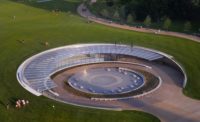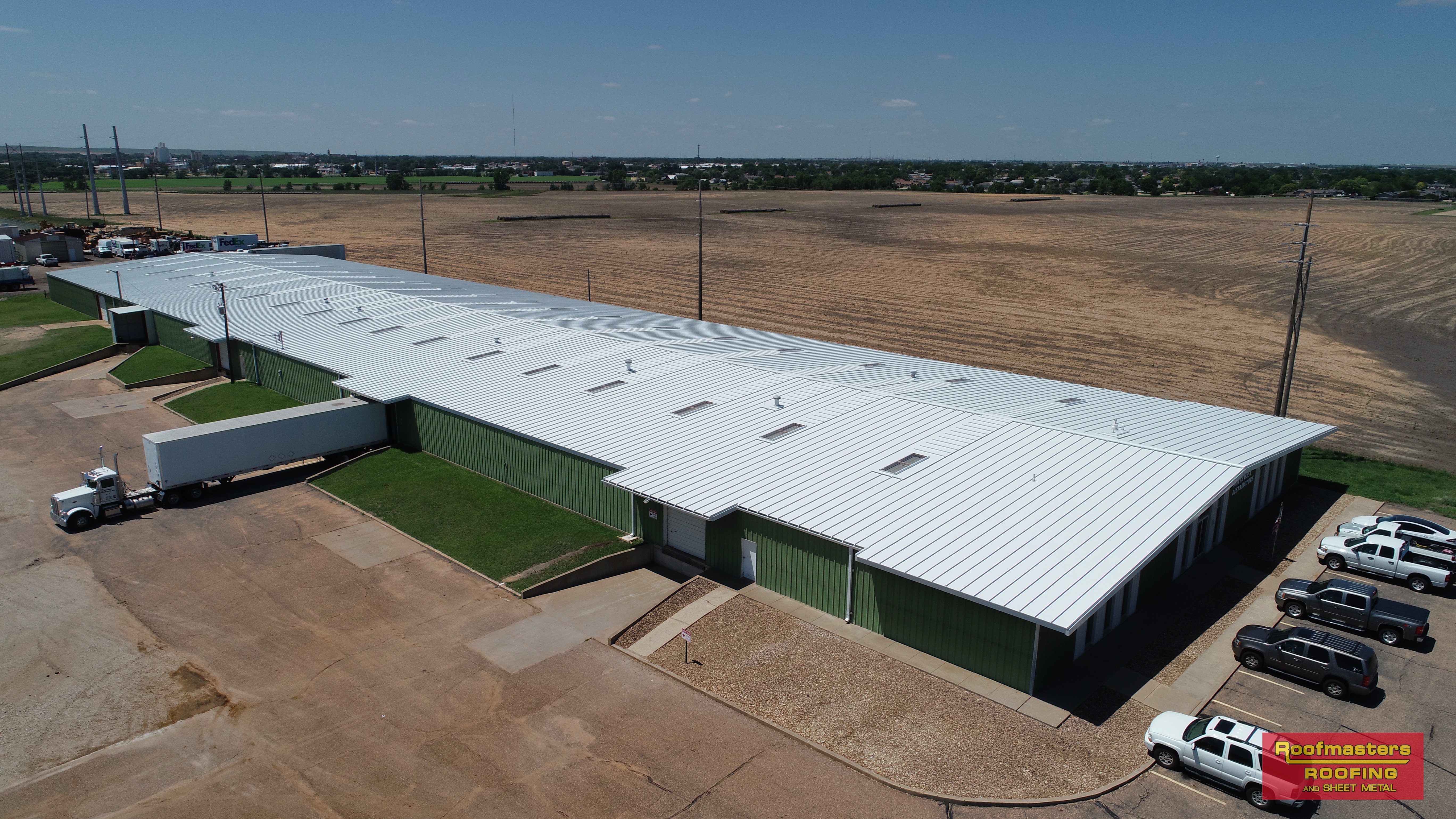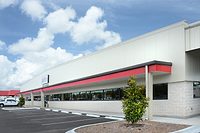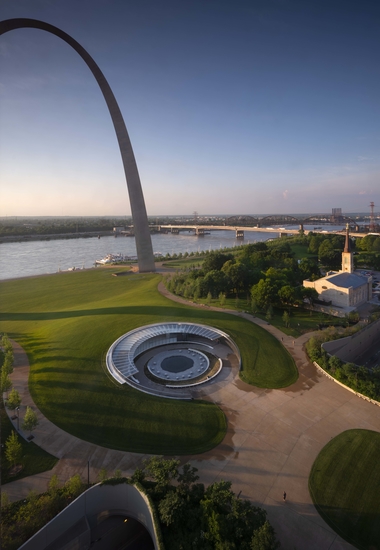Project Profile: Glass Façade and Roof at Entrance to Gateway Arch Visitors Center
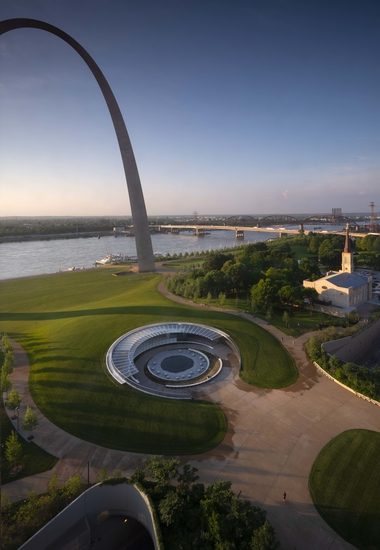
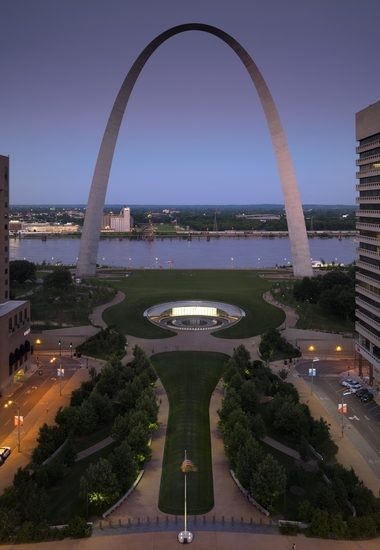
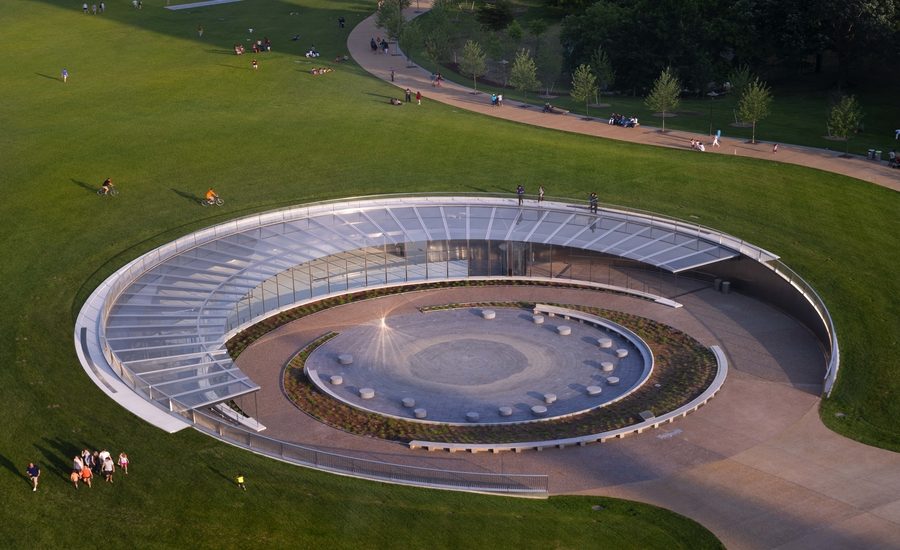
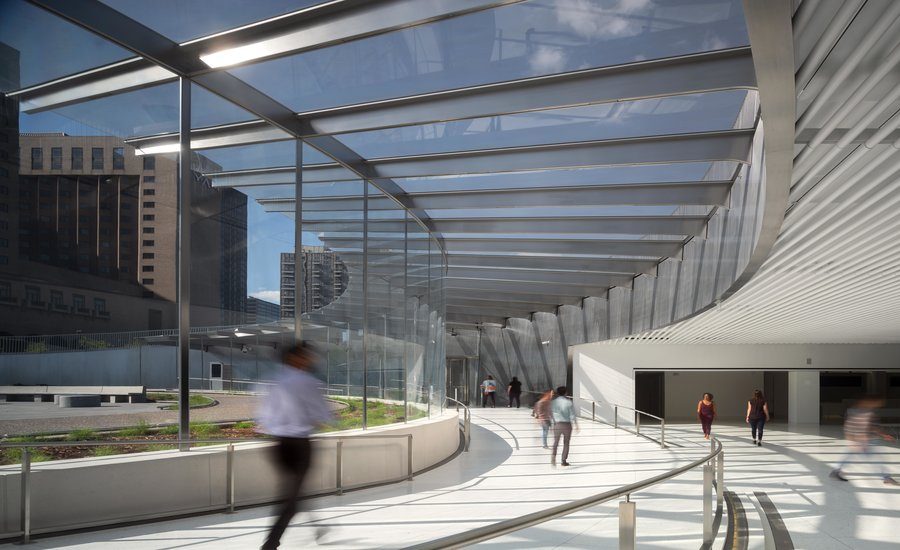
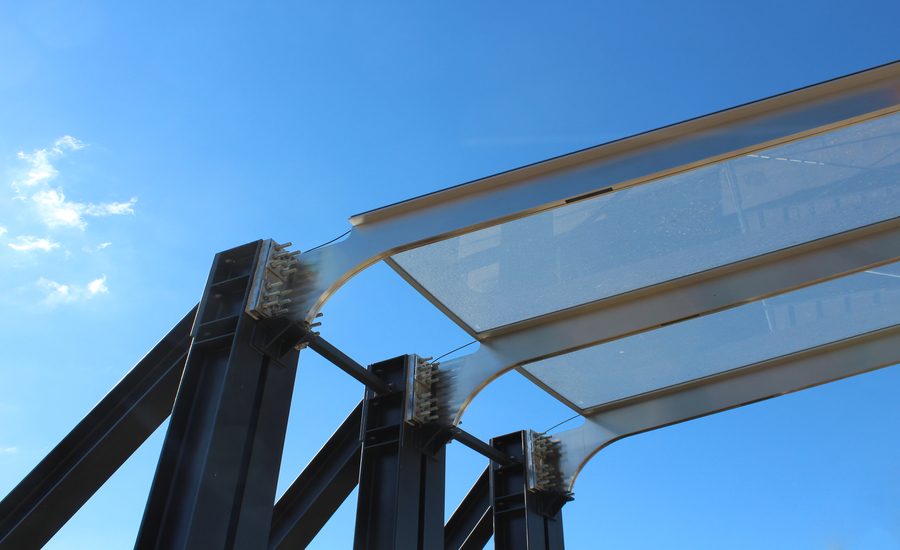





ST. LOUIS, Mo. — A German company recently completed a unique steel and glass roofing project at the Gateway Arch National Park and Gateway Arch National Monument – part of a $380 million park revitalization.
Seele Group of Cos., based in Gersthofen, Germany, installed the roof at the entrance to the visitors center near the base of the arch.
The roof comprises a total of 74 three-ply laminated panes in sizes of up to 2 x 5.5 meters, which are supported on a steel structure weighing 85 tons in total.
The 38 stainless steel cantilever beams are made from milled solid stainless steel sections tensioned with tie bars. A pattern printed on the glass lends the roof glazing a feeling of vitality.
The glass façade, too, with its 24 panes in sizes of up to 1.4 x 5.5 meters, helps to ensure an interior flooded with daylight. Each of the glass panes of the façade weighs 460 kilograms (more than 1,000 pounds) and the joint between façade and glass roof permits movement.
From inside the building the uninterrupted glass permits spectacular views of the area in front of the Gateway Arch National Park and the skyline of St. Louis.
Seele built a mock-up of the proposed solution on its own testing grounds in Gersthofen. The mock-up, consisting of three cantilever beams and the roof panes mounted on these plus the bent façade panes, convinced the architect and the client.
Seele workers began installing the steel and glass construction for the entrance to the Gateway Arch National Monument in early 2017. It was designed by Cooper Robertson, Architect, with James Carpenter Design Associations and Trivers Associates.
“The project at the famous Gateway Arch monument has allowed us to demonstrate our expertise in façade construction – and especially complex steel-and-glass structures — nce again,” said Michael Steinhülb, managing director of seele Inc. in New York.
“The Americans in particular are very much aware of exceptional design and structures, which makes this exactly the right place for us,” he said.
A ceremony was held July 3 marking the end of the overall project, which took about five years to complete.
Looking for a reprint of this article?
From high-res PDFs to custom plaques, order your copy today!




